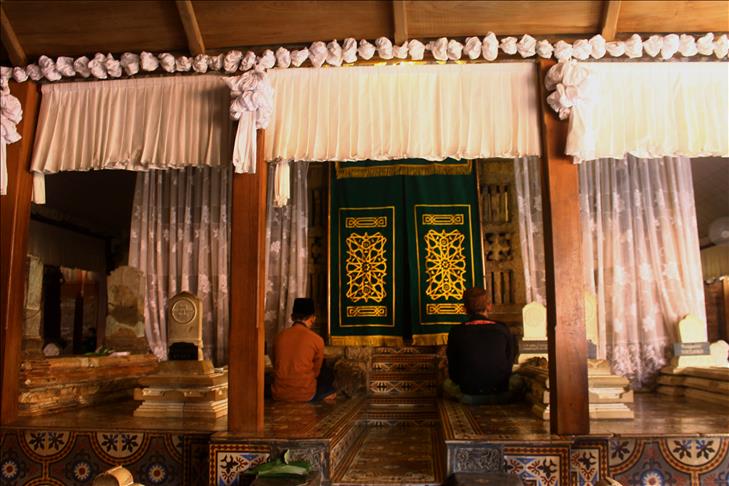
By Ainur Rohmah
JAKARTA
During the holy month of Ramadan, Muslims from across Indonesia flock to a mosque complex whose name, history and design reveal Java’s diverse heritage at the crossroads of Hinduism, Buddhism and Islam.
Worshippers visit the historic Kudus Mosque – named after “al-Quds,” Arabic for Jerusalem - to perform prayers and pay pilgrimage to the tomb of its founder Ja'far Shodiq (1500-1550), one of the “wali songo” (nine saints) who taught Islam to the region in the 15th and 16th centuries.
Mahbub – many Indonesians use one name – told the Anadolu Agency this weekend that he and his family make a pilgrimage to the tomb each year, traveling seven hours from Surabaya city to Kudus Regency.
"It was a long journey, but this is a small thing I can afford to honor his [Ja'far’] service [to spread Islam]," Mahbub said.
Renowned for spreading Islam, Ja'far - also known as Sunan Kudus - served as an advisor and army commander in the Sultanate of Demak.
Like the other “wali songo,” the wise Sunan Kudus taught Islam by connecting it to the values of the indigenous population, who were at the time predominantly Hindus and Buddhists with a long-established culture.
Denny Nur Hakim, a member of the Sunan Kudus Mosque and Tower Foundation, told AA, "The acculturation in this historic mosque is proof that Islam is a religion of tolerance, love and peace."
The blending of the three religions’ values is reflected in the complex’s red stone fountain that features a cow head statue resembling Gumarang Buffalo, once honored by Kudus’ Hindu people. Water for the ablution mandated before Muslim prayers pours from eight faucets – the number eight being associated with the Buddhist philosophy of “Asta Sanghika Marga,” or the Noble Eightfold Path. Even today, the region’s Muslims still refuse to slaughter cows.
Built in 1549, the complex’s 18-meter tower – currently under renovation - is replete with pre-Islamic architecture - such as Javanese split doorways, a three-tired pyramidal roof and ancient Hindu-Buddhist red brickwork held together without cement.
The tower also incorporates details from beyond Java and its local Hindu tradition, a dozen Ming dynasty-era porcelain plates - believed to originate from China and Vietnam - adorning its outer walls.
The pictorial plates on the exterior include blue ones depicting mosques, men with camels and palm trees, as well as others of red and white flowers.
According to local lore, one of the bricks from the mosque - originally part of Jerusalem’s Al-Aqsa, Islam's third holiest site – was gifted to Sunan Kudus by the sultan ruling Palestine at the time.
Furthermore, the mosque stands out as the only one with a large skin drum on its brick minaret, used in summoning worshippers to prayer instead of the more. Whereas Balinese Hindu temples’ towers have drums to send signals, Islamic prayer times are usually announced through the recitation of a specific call to worship.
The tower, which has a history of restoration like the adjacent mosque, is again undergoing repair due to the fragility of almost 80 percent of its bricks.
Rabiman, the restoration project’s coordinator, said at least 10,000 bricks have been replaced so far.
"The substitution technique is done by removing bricks one at a time, very carefully so as not to interfere with the overall construction," he told AA.
A tomb complex to the mosque’s west includes the mausoleum of Sunan Kudus – often crowded with pilgrims – and others belonging to his relatives, companions and the prince and commander of the time.
An embodiment of the rich history that contributes to Java’s unique diversity, the Kudus Mosque complex fascinates researchers and travelers - domestic and international.
Anadolu Agency website contains only a portion of the news stories offered to subscribers in the AA News Broadcasting System (HAS), and in summarized form. Please contact us for subscription options.

